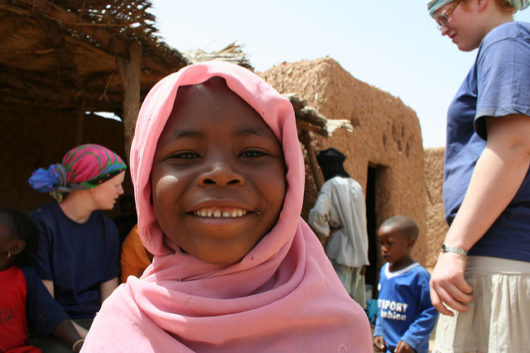Top 10 Facts About Living Conditions in Niger

Following its independence from France in 1960, Niger has faced violent political instability, deadly droughts and difficult living conditions. The following are the top ten facts about living conditions in Niger.
Top Ten Facts About Living Conditions in Niger
-
In 2016, Save the Children declared Niger the “worst country for girls” based on two key criteria: child marriage rates and adolescent fertility.
-
A high rate of child marriage often holds girls back. Over three quarters of Nigerien girls marry before the age of 18. Early marriage only continues the cycle of poverty: girls who marry earlier are less likely to finish school than girls who marry later, which means that they earn less income on average.
-
High adolescent fertility puts women in danger. In Niger, one in five teenage girls gives birth every year. Nigerien women have the highest birthrate in the world, at over seven births per woman. And childbirth is particularly dangerous for younger girls: WHO estimates that pregnancy complications are the second leading cause of death for adolescent girls worldwide.
-
“Husband schools” help build stronger families. To ease the burden on Nigerien woman, men learn the importance of helping with what was traditionally considered “women’s work.” The nonprofit Mercy Corps invites men to “husband schools,” where they learn about family planning, cooking and sanitation. Mercy Corps runs 124 such schools in Niger.
-
High illiteracy remains a stubborn challenge. Only one in five adults in Niger are literate, and as a former French colony, the official language of schooling in Niger is French. Most Nigeriens, though, speak local tribal languages instead, making French literacy a particularly difficult goal.
-
Frequent droughts make food scarce. Since 2000, Niger has weathered four extreme climate-related food crises. In such seasons of poor rainfall, 30 percent of people cannot meet their food needs. In 2017, one and a half million Nigeriens were food insecure, and 42 percent of children under age 5 faced chronic malnutrition.
-
The World Food Program protects Nigerien children. To tackle the effects of food insecurity, the World Food Program treated 650,000 acutely malnourished children and nearly half a million malnourished pregnant and lactating mothers in 2015 alone.
-
Uranium mining depletes Nigerien resources. The French company Areva mines for uranium in the Nigerien town of Arlit. Areva uses millions of liters of water each day, while Arlit’s vegetation has entirely dried up. A 2010 Greenpeace study showed that over its decade of operation, Areva has used 270 billion liters of water, entirely depleting ancient aquifers.
-
Mining contaminates Nigerien water. A 2009 study by Greenpeace showed that five out of six examined water wells in Arlit contained excess radioactivity. And a 2004 study by the French Commission for Independent Research and Information on Radiation showed that uranium levels found in Arlit’s drinking water were up to 100 times the WHO safety standard.
-
Activists stand up against corporate exploitation. After her mother, father and husband died from cancer traced back to radon exposure from Areva’s uranium mines, Jacqueline Gaudet founded the organization Mounana. The organization works with Doctors of the World to collect testimonies from Areva’s former employees to build court cases.
Remedying Colonialism
These top ten facts about living conditions in Niger reflect the need for international assistance to help remedy the harmful effects of colonialism. While living conditions in Niger are difficult, dedicated activists and nonprofits are steadily changing the landscape.
– Ivana Bozic
Photo: Flickr
